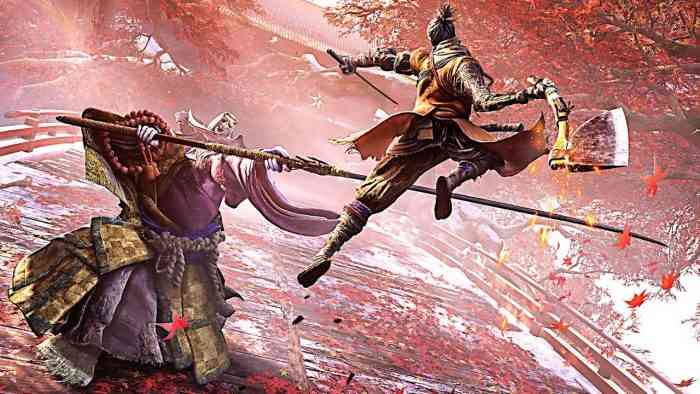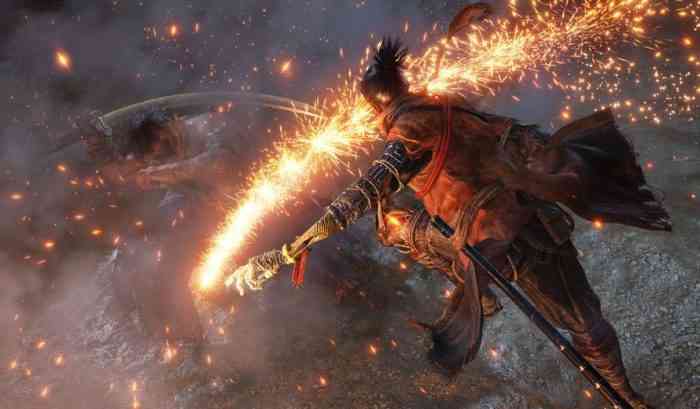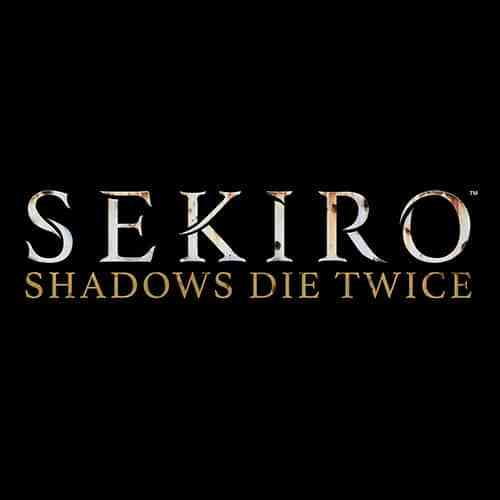Sekiro: Shadows Die Twice Review
Though FromSoftware’s Sekiro: Shadows Die Twice has relentlessly kicked my ass, I can’t put it down. Hidetaka Miyazaki and company have once again succeeded at injecting their Soulsborne formula into a title that’s both fresh and familiar. The gameplay, storytelling, and world are a drastic departure from what fans know and love, but Sekiro’s brimming with features that feel right at home with what we’ve come to expect from the renowned studio. Though I have some minor grievances, Sekiro: Shadows Die Twice is an exceptionally challenging, satisfying, and fun action-adventure experience.
Occurring within a fictional representation of 1500’s Sengoku Japan, you inhabit the role of Sekiro, the One-Armed Wolf, a Shinobi warrior serving a young lord during a period of bloody conflict between rival clans. At the start of the game, your arch nemesis severs your arm, kidnaps your master, and leaves you for dead. You awaken within a dilapidated temple endowed with the Shinobi Prosthetic, a mechanical arm equipped with a grappling hook and fit for wielding a variety of deadly tools. The Sculptor fills you in on the motive behind your master’s abduction and sends you into the unforgiving land of Ashina to rescue him.

Sekiro’s method of storytelling significantly contrasts the ambiguous stories found in Bloodborne and the Souls series. Sekiro speaks and has both an established identity and motive influencing his actions. I never felt attached to the young lord himself, but I could relate to Sekiro’s dedication and will to exact vengeance upon his nemesis. He doesn’t have much in the way of a personality, but he certainly possesses the mantra of a badass ninja. The narrative isn’t entirely cut and dry, but it’s engaging and relatively easy to follow from beginning to end.
Prepare to Die
In traditional Souls-like fashion, the world you explore suggests much of the story. From mountainscapes to dense bamboo forests and towering villages, the colorful world of Ashina is gorgeous, vast, and rife with hidden areas, optional boss encounters, and odd characters to interact with. It’s a far cry from the gothic, gloomy nature of FromSoftware’s previous worlds, and a welcome one at that. What I admire most about Sekiro’s world is how the beauty’s juxtaposed by bloody carnage and brutal enemies. The appearance alone is enough of a fresh take, but how it’s designed to embrace the game’s traversal mechanics makes it my favorite world from the studio so far.
Sekiro’s abilities to jump, shimmy, and grapple throughout Ashina are profoundly welcome additions. Each action feels fluid, and the controls are mapped simply. It’s a blast to zip across a series of attachable perches to land on a rooftop and stealthily bring down an enemy. Scaling and shimmying across cliffs feels rather standard, but works well in addition to grappling. As standard as it is, jumping is odd for a FromSoftware title, but it greatly contributes to both traversal and combat.

While Sekiro’s traversal mechanics are easy to get the hang of, combat’s another beast entirely. Gone are the days of dodge rolling your way to victory. Sekiro demands you abandon your Soulsborne muscle memory and face your adversaries head-on in fast-paced, upfront encounters. Managing stamina is nonexistent, as combat focuses on timing and strategy as you strike and deflect incoming attacks with finesse and precision. The goal is to inflict a Shinobi Deathblow upon your enemies, and you do so by dwindling their posture while maintaining your own.
Unbelievably Deep Combat
This is FromSoftware’s most in-depth combat system to date. Between a multitude of fighting styles and a variety of Shinobi tools, choosing when to employ specific moves and Shinobi weapons is paramount to winning fights. It’s highly engaging and incredibly satisfying to overcome tough opponents. Unlocking combat abilities and upgrading your Shinobi tools provides a nice sense of progression as you move through the world. I’d be remiss to deny it took me several hours to grow accustomed to the combat mechanics, but fortunately, it feels outstanding and is made all the more accessible by simple controls.
Initially, I was somewhat disappointed by the lack of additional weapons and gear to acquire throughout the world, as it’s an aspect I’ve loved from Bloodborne and Dark Souls. However, I grew to appreciate the strong focus on Sekiro as a character, but more importantly the emphasis on combat. Items that provide buffs are at times critical to overcoming particular bosses. The same applies to acquiring materials for upgrading your Shinobi Tools. Therefore, exploration is well worth your time because you’re always rewarded in doing so.
While I appreciate the option to stealthily wipe out a group of enemies or weaken a boss before engaging in a hectic battle, it’s one of the weaker aspects of the game. It works well but feels uninspired. Hugging walls, hiding in tall grass, and dropping onto unsuspecting enemies are all things we’ve experienced in countless other action titles. The AI’s also pretty dumb. It may be by design, but they’re somewhat oblivious to your presence and any noise you create. I’ve also encountered a few scenarios where enemies will spot and mindlessly attack me through walls and others where they’ll glitch through some objects. The stealth mechanics are solid and fresh for a FromSoftware game but ultimately fall short of bringing anything interesting to the Sekiro overall.
Immersive Experience
Graphically, Sekiro isn’t necessarily anything to write home about, but that doesn’t undermine the beauty of the world FromSoftware has crafted. 1500’s Sengoku Japan is gorgeous to behold. Light rays peek through colorful trees and detailed architecture towers throughout villages, forests, and mountains. As expected, the designs of characters, bosses, and enemies possess that unique FromSoftware touch. Sekiro’s music and sound design are topnotch. From the clashing of steel, blood sprays, and creature noises, the audio creates a strong sense of tension and brutality. Yuka Kitamura’s score is beautiful and wonderfully compliments every scenario. Whether you’re leisurely strolling through a quiet forest or battling an engaged ogre, the music immerses you deeper into the experience.
Overall, I can’t get enough of Sekiro despite being terrible at playing it. It’s a great evolution of the Soulsborne experience with impressive new traversal and combat mechanics in a beautiful world loaded with odd characters and challenging enemies. I’m excited to jump into my second playthrough to find any areas or bosses I missed initially, as well as continue to upgrade my Shinobi Tools and combat abilities.
For more on Sekiro: Shadows Die Twice, you can check out a multitude of gameplay videos on our YouTube channel.
***PS4 Review code provided by Activision***
The Good
- Challenging and satisfying combat
- Excellent traversal mechanics
- Beautiful setting
- Effective storytelling
The Bad
- Relatively dumb AI
- Lackluster stealth mechanics
- Minor graphical hiccups

